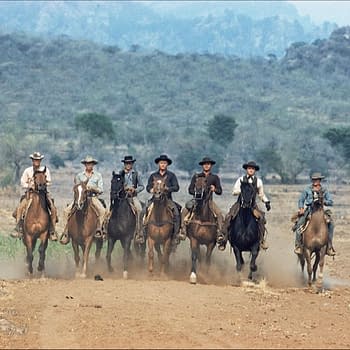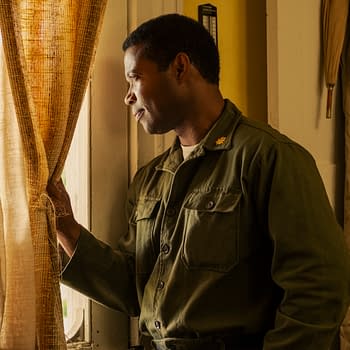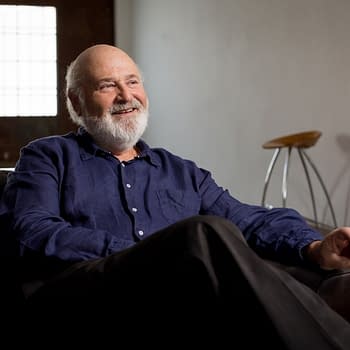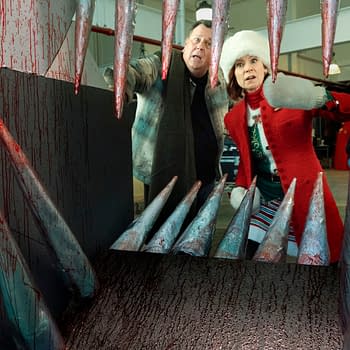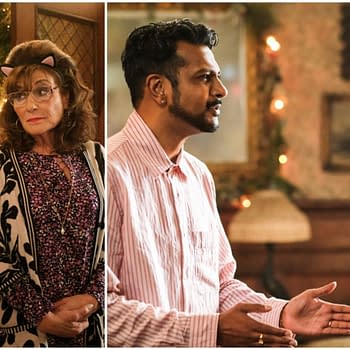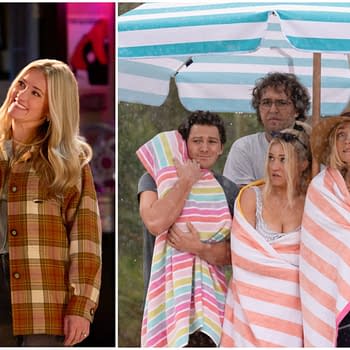Posted in: FX, TV, What We Do In The Shadows | Tagged: doug jones, exclusive, fx, Harvey Guillén, hulu, interview, matt berry, Paul Jones, what we do in the shadows
What We Do in the Shadows Prosthetics Designer on "Hybrid Creatures"
Prosthetics makeup designer Paul Jones spoke with us about bringing to life FX's What We Do in the Shadows episode "Hybrid Creatures."
Paul Jones is a seasoned veteran in Hollywood with over 35 years of experience as a prosthetic makeup effect designer, starting in 1988 with horror classics like The Lair of the White Worm, Hellbound: Hellraiser II, Waxwork, and The Unholy. Aside from his legendary work in horror, he's also worked outside the genre with recent works, including Yorgos Lanthimos' Poor Things (2023) for Searchlight Pictures and Wes Anderson's Asteroid City (2023) for Focus Features. Aside from his film work, Jones has also worked on TV shows as recently as BBC's Orphan Black, Paramount+'s Star Trek: Discovery. and FX's What We Do in the Shadows. He spoke to Bleeding Cool about how he got involved with the show, the process of creating the Guillermo (Harvey Guillén) hybrid clones in the season five episode "Hybrid Creatures," and other memorable moments from the vampire comedy.
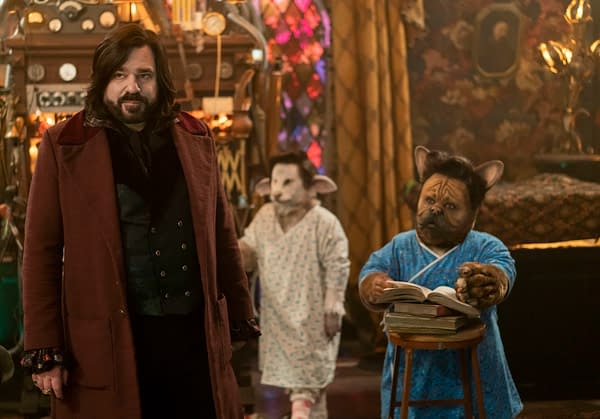
What We Do in the Shadows: Prosthetic Makeup Designer Paul Jones on Creating the Guillermo Clones
Bleeding Cool: How did you end up working on 'What We Do in the Shadows?'
I was surprised. I got a call from a producer I'd worked with a few times, and he said, "I'm doing this series, and it's about some vampires living in a house, 'What We Do in the Shadows, it's a TV show based on the movie if you've seen it." I'm like, "You're kidding me?! Of course, I've seen it." That was it, and having that relationship with the producer. He brought me on board from episode two, season one, and I've been on it ever since.
In the most recent season, the 'Hybrid Creatures' episode stood out the most. What was your approach to the failed Guillermo clones?
It was fun because the throughline story of the show is that Guillermo eventually becomes a vampire at the heart of the series. When it finally happens, it gets all kinds of messed up. We're doing these tests, and Laszlo [Matt Berry] is doing tests on him to figure out what's wrong with him, and in the process, he creates these hybrid animals. When I read the script, it was a little daunting, to be honest, because we are a little show. In the original script, it was 13 animals, and I was like, "Guys, I'll be happy to make as many as you need, but we have a modest budget and schedule. I'll do what I can." I ended up giving them far more than they ended up whittling down. We started with Guillermo and figured out with this bone structure with Harvey what animals would most suit his personality because he is a cute and cuddly guy. That's where all the animals came from as the production designer [Shayne Fox] had a couple of ideas, and the showrunner, Paul [Simms], and the director, Kyle [Newacheck], all mucked together and started doing some designs and figured out which ones would be the most presence on screen.

Were there certain ones that were cut?
We had a cat-lizard hybrid, which made the rounds for a while, and we figured it was a little bit too much of a mixture. We felt keeping more of 'The Island of Doctor Moreau'-esque feel suited the show's look. We also liked putting more performers in makeup rather than relying on puppets. There are a lot of puppets in the show, but it would be a nice balance to have more accessible puppets. That's why we went with the toads and the rat creature. We also have Binky, which was the outlier. Binky's this crazy tadpole with Guillermo's face. It's inspired by the opening scene of 'Monty Python's Meaning of Life,' one of my favorite comedies.
Was there a hybrid that took longer to develop than others?
Each hybrid had its issues. When you're dealing with fur trying to have a realistic pattern and transition that into a human face that has technical aspects was difficult. The main aspect of any makeup is if you don't cast the actors early enough, you're sculpting the makeup generically. That's what we had to do on the show because we had so much lead time that we didn't have our actors in place before we started creating the makeup. When it came to gluing them on, there was a bit of pulling and stretching to get them to fit. That worked out because more of our performers came through the makeup and worked to our advantage.
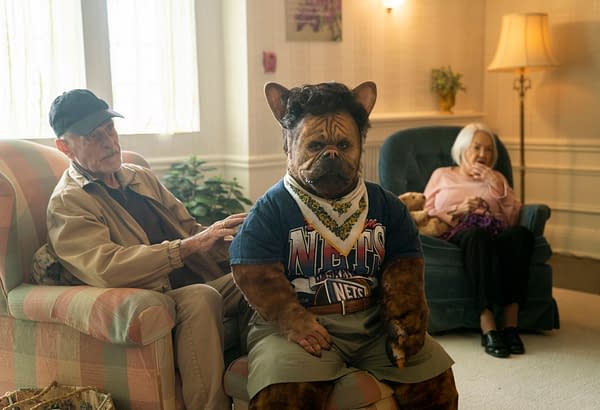
Was 'Hybrid Creatures' the most difficult episode for 'What We Do in the Shadows,' or was there a comparable episode?
['Hybrid Creatures'] was the biggest workload. It seems each season, they start big and end big. The first season, we had werewolves, and then at the end, we had the doll and all these weird ghost creatures. Each season has its own merits and challenges. Season five wasn't any worse than the others. Season six is our biggest workload. I don't want to spoil it for you, but they "went out with a bang," shall we say. It was good and fun.
Did you feel there was makeup or effect on the show that was beyond the show's resources?
You've seen the show. The esthetic is practical and it's an old-school feel to it. I heard someone call it a modern-day 'Addams Family.' The thing about these genre shows is if you throw too much on the screen, it gets lost in the comedy, because we have a house full of genius comedians playing wonderful characters. My job was to augment that a little bit with some more fantasy. If we go too far, we steal the scenes from the show and the comedy. As Paul Simms, the showrunner, says, "You always have to find the funny because it's a comedy." Sometimes, our creatures were more elaborate, others were simple, but we always tried to keep them grounded because it suits the show so much better.
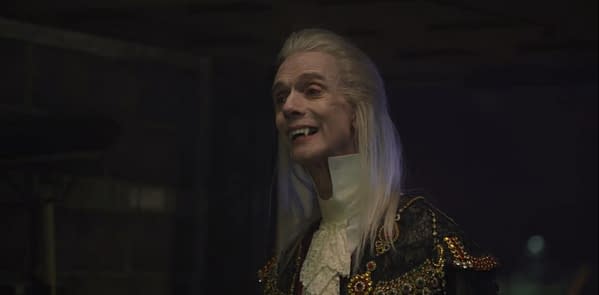
Other characters on the show, like the Baron, who went through multiple phases as Doug Jones, almost effortlessly play into his charred and human forms. What goes into developing a character like that?
I've had a lot of luck with this show because of my previous experience with FX shows and their comedies. I did 'Man Seeking Woman' for three seasons, so it has a similar aesthetic with its practical nature. I found there was shorthand quickly with what the show needed. When we would create something, it was rare that it would get lost in the mix. The biggest challenge on the show was creating something for one episode and then evolving it into a main character, which seems to happen with many series but never had it happen with a prosthetic character.
The Nadja doll and the Sire character [Goëjlrm] were written for one episode. What happened with the doll the footage came back, and the network was like, "This little thing is great. Let's stick her in the background in the next scene. Maybe next week she can walk through the frame or something like that, then next moment, she's number five on the call sheet." I had a lot of luck [on the show] but a bit of stress because she was built for one episode, so I originally made it to last that one episode. It seems each season, she gets an upgrade. It's like buying the basic model Honda, then throwing extra rims on it and giving it a new paint job. That's been the Nadja doll, so she's this bionic animatronic puppet, whereas before, she was basic. She now has all these extra rigs with separate limbs, and that's been a nice thorough arc, but off-camera, it's been fun.
As experienced as you are in this industry, you explained earlier how comedy defines a show and how the process extends the existing talent. Did you ever feel that you had to go beyond talent with your work?
What I do lends itself to a certain genre of shows. With anything, whether you're doing a horror movie, fantasy, or fantasy comedy, the trick is to make sure what you're doing doesn't overwhelm what the story is at all. Being a film lover, it all comes down to a story, so my job is to help it along. Whether it's creating a fake nose or a ten-foot demon, the result is the same if it takes you away from what's happening in the film or the TV show, then I haven't done my job. There have been some films in my career, like the 'Silent Hill' movies where the esthetic drives the story, same with the 'Resident Evil' [franchise]. That has been that has been easier to accomplish. Other times, you're doing subtle makeup and don't want it to be read as makeup. You want someone to assume somebody looks that way and not go, "Let's not worry about the story anymore. Look at this cool makeup." That's always the trick for a prosthetics person, in general, is to add to the movie, not to take away from it.
What We Do in the Shadows, which also stars Kayvan Novak, Natasia Demetriou, Mark Proksch, and Kristen Schaal, has been renewed for a sixth and final season. The series is also available to stream on Hulu.






